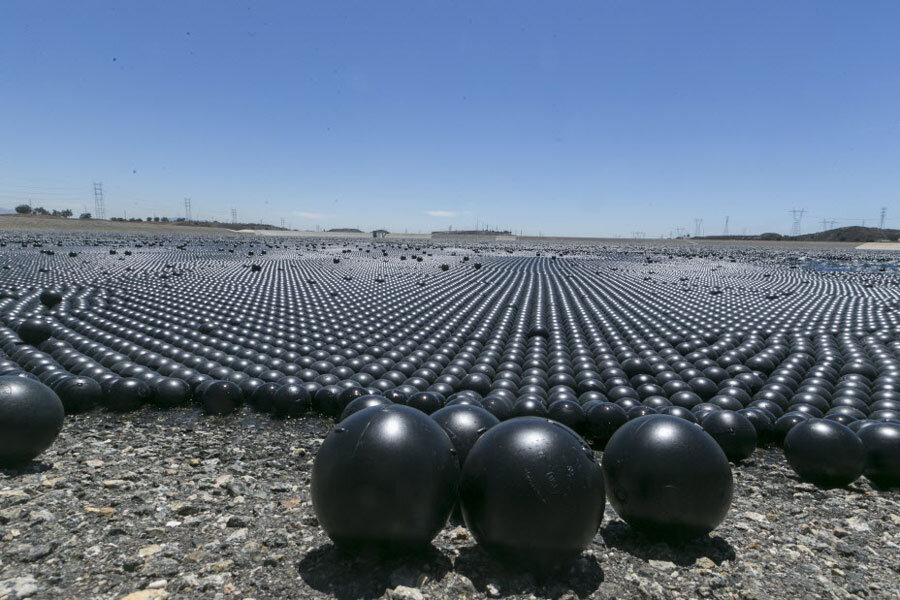New Los Angeles drought-fighting tool: millions of plastic balls
Loading...
The ongoing drought in California has made for some unusual sights: grass turning from green to orange, fields turning to dust, and lakes turning to empty, cracked moonscapes.
But perhaps the most unusual image of the drought went viral this week: Thousands of plastic black balls being rolled into the Los Angeles reservoir. The video of a reservoir turning into "a goth-looking PlayPlace" (per Gizmodo) is both hypnotizing and kind of hilarious. While recent headlines – and statements from officials – have trumpeted the project’s ability to save precious drops of water, the $34.5 million project was actually launched seven years ago to help protect water quality in the county’s reservoirs.
Each “shade ball” costs 36 cents, and they will combine to keep about 300 million gallons of water from evaporating each year.
“Visually it is pretty spectacular,” says Sally Thompson, an assistant professor of environmental engineering at the University of California at Berkeley. “But the actual design [of the project] is more about water quality.” The evaporation benefits, she adds, is “a handy (and timely) side effect.”
This week, the Los Angeles Department of Water and Power rolled out (literally) the last of 96 million plastic “shade balls” into county reservoirs. The $34.5 million project was conceived in 2008 to help bring the county into compliance with new federal water quality standards. As California enters its fourth year of severe drought, officials have been highlighting its drought-fighting spin-off effects.
“It takes bold ingenuity to maximize my goals for water conservation,” said Los Angeles Mayor Eric Garcetti, according to the LA Daily News. “This effort by LADWP is emblematic of the kind of creative thinking we need to meet those challenges.”
Mitch Englander, a Los Angeles city councilor, said that the 300 million gallons of water saved would be enough to provide drinking water for 8,100 people for a full year.
With the LADWP servicing more than 600,000 water connections, the savings from the shade balls are less a solution and more an “every little bit helps” measure. But the impacts on water quality can be significant – especially given the relatively inexpensive cost of the project compared with other methods.
Floating plastic covers are another common method to improve water quality and reduce evaporation, but they are often prohibitively expensive, Professor Thompson says. Installing covers on the LA reservoir would have cost $300 million.
For years, she says, reservoirs prevented the contamination of drinking water with chemicals, including chlorine. Chlorination is effective, but will form chemical disinfection byproducts that may be toxic in high doses. The aim of the shade balls is to keep the concentrations of these byproducts as low as possible.
The balls were first deployed in the county’s Ivanhoe reservoir in 2008 when chlorine used to disinfect the water was mixing with naturally-occurring bromine. When exposed to sunlight, that combination creates the carcinogen bromate, the LA Times reported at the time.
“For many years there’s always been a trade off of how do you maximize the security of the water when it comes to health risks, while minimizing the chemical by-products you create,” says Thompson.
The shade balls are a cheap, safe way to protect the 175-acre reservoir from dust, rain, birds, and other contaminants, she says. The balls are supposed to have a 25-year lifespan.
The evaporation reduction benefits of the project – and its visual appeal – are fortunate side effects, she adds.
“I think they had some fantastic footage and they were able to highlight that this is very nice side effect,” she says. “This has been a really clever way for the Mayor of Los Angeles and the [LADWP] to draw attention to the innovative things they’re doing and that the drought is an urgent issue.”








